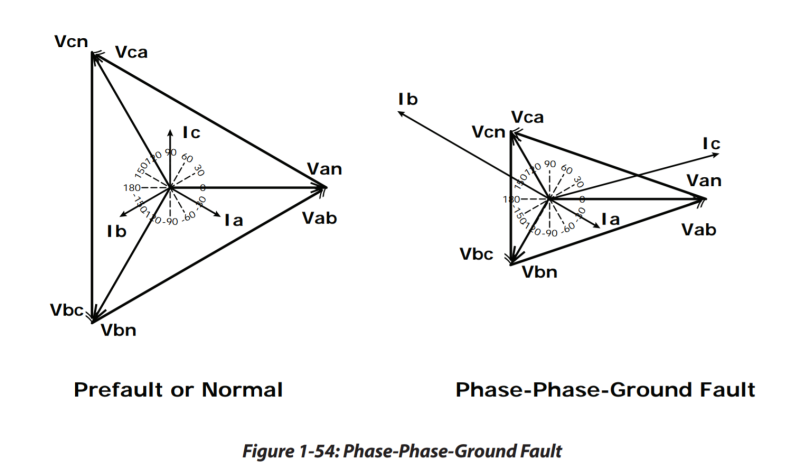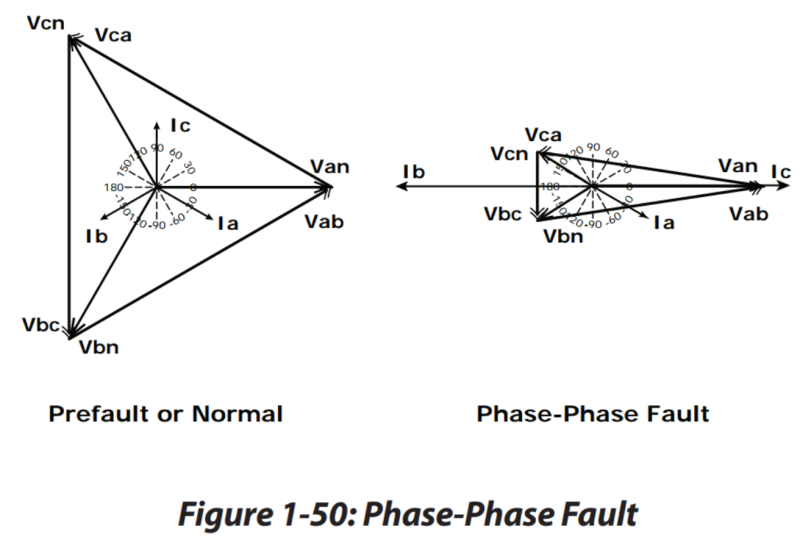You need to break everything down to their sequence components.
Positive sequence - normal operating rotation. It can ABC or ACB but it has to be whatever is standard. Positive sequence by definition is all three phases with equal magnitude and 120 degrees apart with standard rotation
Negative sequence - the exact same thing as positive sequence but opposite rotation. all phases are of equal magnitude and 120 degrees apart
Zero sequence - all three phasors are equal in magnitude and angle. This is sometimes called the residual since it is equal to I0 = (IA + IB + IC)/3
Ground faults, load imbalance, untransposed lines will all generate zero sequence voltage at the disturbance. Zero sequence voltage can also be looked at as the difference between neutral and ground. If there is a zero sequence path to a ground source, the voltage will generate zero sequence current.
Phase to phase faults don't generate zero sequence current. For a three phase fault, all the current going to the fault will be positive sequence current since the fault is balanced just like a very large load. For line to line faults, all the fault current that goes down one phase will return on the other faulted phase. There is no residual or zero sequence since the net current going to the fault is zero.
I am unsure as to what you are talking about in the last question. The voltage and current magnitudes and angles change during a fault. If you have a phase to phase fault, the voltages of the two faulted phases get pulled together. In a single line to ground fault, the voltages magnitudes and angles, with respect to ground change. How much they change depends on your grounding.
I think this clears up some if you review sequence components. Without sequence components, it is hard to understand unbalanced faults. All disturbances that are unbalanced produce negative and/or zero sequence voltage at the point of the disturbance, which decays as you move electrically away and deeper into the system.


